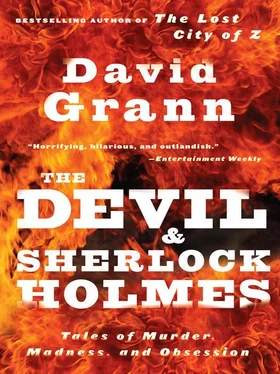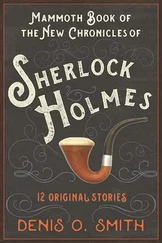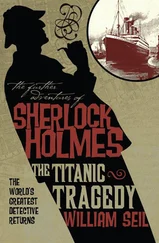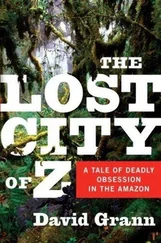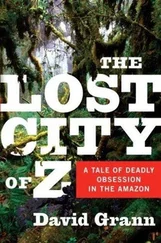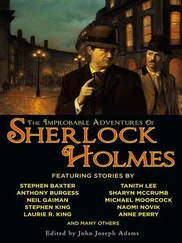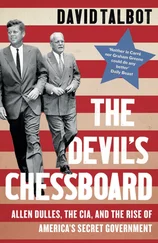The Polish authorities, meanwhile, had launched an internal investigation into Bala’s allegations of mistreatment. In early 2006, after months of probing, the investigators declared that they had found no corroborating evidence. In this instance, they insisted, Bala’s tale was indeed a mytho-creation.
“I have infected you,” Chris warns the reader at the beginning of “Amok.” “You will not be able to get free of me.” Wroblewski remained haunted by one riddle in the novel, which, he believed, was crucial to solving the case. A character asks Chris, “Who was the one-eyed man among the blind?” The phrase derives from Erasmus (1469–1536), the Dutch theologian and classical scholar, who said, “In the kingdom of the blind, the one-eyed man is king.” Who in “Amok,” Wroblewski wondered, was the one-eyed man? And who were the blind men? In the novel’s last line, Chris suddenly claims that he has solved the riddle, explaining, “This was the one killed by blind jealousy.” But the sentence, with its strange lack of context, made little sense.
One hypothesis based on “Amok” was that Bala had murdered Janiszewski after beginning a homosexual affair with him. In the novel, after Chris’s closest friend confesses that he is gay, Chris says that part of him wanted to “strangle him with a rope” and “chop a hole in a frozen river and dump him there.” Still, the theory seemed dubious. Wroblewski had thoroughly investigated Janiszewski’s background and there was no indication that he was gay.
Another theory was that the murder was the culmination of Bala’s twisted philosophy—that he was a postmodern version of Nathan Leopold and Richard Loeb, the two brilliant Chicago students who, in the nineteen-twenties, were so entranced by Nietzsche’s ideas that they killed a fourteen-year-old boy to see if they could execute the perfect murder and become supermen. At their trial, in which they received life sentences, Clarence Darrow, the legendary defense attorney who represented them, said of Leopold, “Here is a boy at sixteen or seventeen becoming obsessed with these doctrines. It was not a casual bit of philosophy with him; it was his life.” Darrow, trying to save the boys from the death penalty, concluded, “Is there any blame attached because somebody took Nietzsche’s philosophy seriously and fashioned his life upon it? … It is hardly fair to hang a nineteen-year-old boy for the philosophy that was taught him at the university.”
In “Amok,” Chris clearly aspires to be a postmodern Übermensch , speaking of his “will to power” and insisting that anyone who is “unable to kill should not stay alive.” Yet these sentiments did not fully explain the murder of the unknown man in the novel, who, Chris says, had “behaved inappropriately” toward him. Chris, alluding to what happened between them, says teasingly, “Maybe he didn’t do anything significant, but the most vicious Devil is in the details.” If Bala’s philosophy had justified, in his mind, a break from moral constraints, including the prohibition on murder, these passages suggested that there was still another motive, a deep personal connection to the victim—something that the brutality of the crime also indicated. With Bala unable to leave Poland, Wroblewski and his team began to question the suspect’s closest friends and family.
Many of those interrogated saw Bala positively—“a bright, interesting man,” one of his former girlfriends said of him. Bala had recently received a reference from a past employer at an English-instruction school in Poland, which described him as “intelligent,” “inquisitive,” and “easy to get along with,” and praised his “keen sense of humor.” The reference concluded, “With no reservation, I highly recommend Krystian Bala for any teaching position with children.”
Yet, as Wroblewski and his men deepened their search for the “Devil in the details,” a darker picture of Bala’s life began to emerge. The years 1999 and 2000, during which time his business and his marriage collapsed—and Janiszewski was murdered—had been especially troubled. A friend recalled that Bala once “started to behave vulgarly and wanted to take his clothes off and show his manliness.” The family babysitter described him as increasingly drunk and out of control. She said he constantly berated his wife, Stasia, shouting at her that “she slept around and cheated on him.”
According to several people, after Bala and his wife separated, in 2000, he remained possessive of her. A friend, who called Bala an “authoritarian type,” said of him, “He continuously controlled Stasia, and checked her phones.” At a New Year’s Eve party in 2000, just weeks after Janiszewski’s body was found, Bala thought a bartender was making advances toward his wife and, as one witness put it, “went crazy.” Bala screamed that he would take care of the bartender and that he had “already dealt with such a guy.” At the time, Stasia and her friends had dismissed his drunken outburst. Even so, it took five people to restrain Bala; as one of them told police, “He was running amok.”
As Wroblewski and his men were trying to fix on a motive, other members of the squad stepped up their efforts to trace the two suspicious telephone calls that had been made to Janiszewski’s office and to his cell phone on the day he disappeared. The public telephone from which both calls were made was operated with a card. Each card was embedded with a unique number that registered with the phone company whenever it was used. Not long after Bala was released, the telecommunications expert on the Janiszewski case was able to determine the number on the caller’s card. Once the police had that information, officials could trace all the telephone numbers dialled with that same card. Over a three-month period, thirty-two calls had been made. They included calls to Bala’s parents, his girlfriend, his friends, and a business associate. “The truth was becoming clearer and clearer,” Wroblewski said.
Wroblewski and his team soon uncovered another connection between the victim and the suspect. Malgorzata Drozdzal, a friend of Stasia’s, told the police that in the summer of 2000 she had gone with Stasia to a night club called Crazy Horse, in Wroclaw. While Drozdzal was dancing, she saw Stasia talking to a man with long hair and bright-blue eyes. She recognized him from around town. His name was Dariusz Janiszewski.
Wroblewski had one last person to question: Stasia. But she had steadfastly refused to cooperate. Perhaps she was afraid of her ex-husband. Perhaps she believed Bala’s claim that he was being persecuted by the police. Or perhaps she dreaded the idea of one day telling her son that she had betrayed his father.
Wroblewski and his men approached Stasia again, this time showing her sections of “Amok,” which was published after she and Bala had split up, and which she had never looked at closely. According to Polish authorities, Stasia examined passages involving Chris’s wife, Sonya, and was so disturbed by the character’s similarities to her that she finally agreed to talk.
She confirmed that she had met Janiszewski at Crazy Horse. “I had ordered French fries, and I asked a man next to the bar whether the French fries were ready,” Stasia recalled. “That man was Dariusz.” They spent the entire night talking, she said, and Janiszewski gave her his phone number. Later, they went on a date and checked into a motel. But before anything happened, she said, Janiszewski admitted that he was married, and she left. “Since I know what it’s like to be a wife whose husband betrays her, I didn’t want to do that to another woman,” Stasia said. The difficulties in Janiszewski’s marriage soon ended, and he and Stasia never went out together again.
Читать дальше
